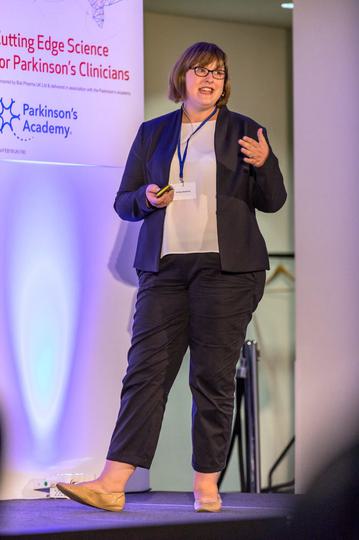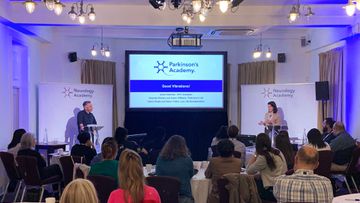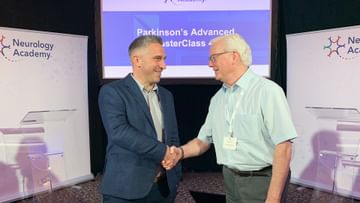Cutting Edge Science – Is postural instability the clinical cornerstone of Parkinson’s diagnosis?
Event reportsIn July this year, the Parkinson’s Academy presented “Cutting Edge Science for Parkinson’s Clinicians”, an educational meeting sponsored by Bial Pharma UK Ltd. This one-day meeting was chaired by Dr Peter Fletcher and attended by a diverse audience of neurologists, care of the elderly physicians, psychiatrists and Parkinson’s nurses. The meeting was a chance to review advances in the clinical understanding of Parkinson’s and discuss how to build on these insights in routine clinical practice. Each week we are posting a blog to look at the day’s speaker sessions in more detail.

“Walking is part of being human” began Dr Emily Henderson (University of Bristol and Royal United Hospitals Bath NHS Foundation Trust) who went on to note that the Hoehn and Yahr scale is defined by walking and postural instability.1 Indeed, falls in Parkinson’s are a major problem, with over 80% of patients falling by 15 years.2 Dr Henderson explained that falls tend to peak at around 10 years post diagnosis, when the patients are typically still mobile, but with significant walking and balance impairments (i.e. at Hoehn and Yahr stage III). After this, the fear of falling can severely limit the life sphere, and as a result most falls occur in the home. It is therefore no surprise that ‘Balance and Falls’ are the top research priority for Parkinson’s UK.3Although walking is often assumed to become an automatic movement, Dr Henderson explained that dual tasking experiments have confirmed that walking does require frontotemporal function. Both the nucleus basalis of Meynert and the pedunculopontine nucleus undergo degeneration in Parkinson's, with more severe loss associated with cognitive impairment.4 Once gait is threatened (e.g. due to freezing or festination) the brain has to use greater attentional resource, but this is difficult in the presence of a cholinergic deficit. As James Parkinson noted in his seminal essay
This led to the hypothesis that improving cognition may prevent falls in people with Parkinson’s and Dr Henderson described a randomised, double-blind study of rivastigmine for gait stability. After about eight months of treatment patients treated with rivastigmine showed significantly improved step time variability for normal walking versus those treated with placebo (p=0.002) as well as in simple dual task performance (p=0.045).5

References:
- Goetz CG, Poewe W, Rascol O, et al. Movement Disorder Society Task Force report on the Hoehn and Yahr staging scale: status and recommendations. Mov Disord 2004;19(9):1020-1028.
- Hely MA, Morris JG, Reid WG, Trafficante R. Sydney Multicenter Study of Parkinson's disease: non-L-dopa-responsive problems dominate at 15 years. Mov Disord 2005;20(2):190-199.
- parkinsons.org.uk/content/our-top-10-research-areas-improving-everydaylife
- Yarnall A, Rochester L, Burn DJ. The interplay of cholinergic function, attention, and falls in Parkinson's disease. Mov Disord 2011;26(14):2496-2503.
- Henderson EJ, Lord SR, Brodie MA, et al. Rivastigmine for gait stability in patients with Parkinson's disease (ReSPonD): a randomised, double-blind, placebo-controlled, phase 2 trial. Lancet Neurol 2016;15(3):249-258.
Related articles
'The things you can't get from the books'
Parkinson's Academy, our original and longest running Academy, houses 23 years of inspirational projects, resources, and evidence for improving outcomes for people with Parkinson's. The Academy has a truly collegiate feel and prides itself on delivering 'the things you can't get from books' - a practical learning model which inspires all Neurology Academy courses.


